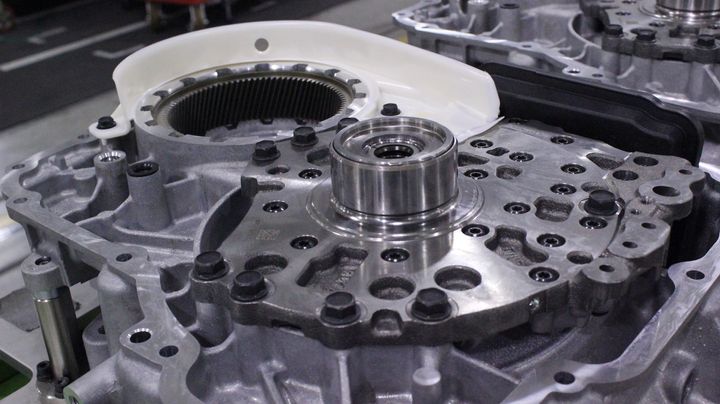
There are many components being manufactured here in the U.S. that are helping improve fuel economy and sustaining jobs.
President Donald Trump last month traveled to the Motor City to talk about automotive jobs. But he also used the trip to announce that the administration would revoke and reconsider a recent determination that reaffirmed the nation’s landmark clean vehicle standards.
Here’s the thing, though: the administration is criticizing the very standards that have already created—and are continuing to create—jobs across America. At the same time, the president’s recent budget blueprint proposes to cut programs across several agencies critical to the nation’s vehicle technology leadership.
In fact, the innovation to make U.S. vehicles much more efficient, and the investment in American factories to build the technology to do so, has been a key part of the automotive recovery and it remains critical if the U.S. is going to protect the jobs we have today, and keep building jobs as an automotive and technological leader into the future.
If the president and EPA Administrator Scott Pruitt are serious about supporting the environment and jobs at once, they already have the tools they need... vehicle standards are boosting jobs, protecting the environment and protecting consumers today.
Over the past decade, automakers and suppliers fully met the nation’s common sense vehicle standards while building great cars consumers love, returning to profitability and global competitiveness, and bringing back 700,000 direct jobs.
Today, hundreds of thousands of American workers in more than 1,200 facilities in 48 states have jobs building the components and materials that directly contribute to making our vehicles more fuel efficient than ever. These vehicle standards—which are on track to ensure light-duty vehicles meet the equivalent of around 36 miles per gallon (around 51 mpg in regulatory language) by 2025—have been key component to our nation’s auto industry’s recovery since 2009.
This success is a credit to American workers and companies all across the country, and is the kind of success that the Trump administration should be celebrating.
In fact, as the president was speaking, there were roughly 70,000 people in the state of Michigan alone working in over 200 factories and engineering facilities building the advanced technology that meets these fuel economy standards. In Ohio, an upcoming report from the BlueGreen Alliance and Natural Resources Defense Council found 80 facilities and 28,000 manufacturing workers employed building clean, efficient vehicle technology. They range from jobs in factories owned by major automakers and suppliers employing thousands of people, to small, locally owned manufacturers with just a few employees. We’re talking about workers building transmissions that transfer power more efficiently; engines that provide more power with less displacement; and lighter, stronger steel that reduces weight, but still keeps us safe. In turn, these companies are part of an integrated supply chain that includes hundreds of additional facilities building related technologies and assembling these technologies into the popular cars, SUVs, and trucks in showrooms today.
Critics of the standards have cited analysis that complying with the standards could cost automakers $200 billion. But what critics are calling “cost” is the industry’s orders for new technology from thousands of U.S. components suppliers, which themselves employ hundreds of thousands of workers. It’s the upgrades to factories securing today’s autoworkers and supplier jobs. And, it’s the “cost” of new and retooled plants sustaining U.S. manufacturing jobs into the future. Those “costs” are what make it possible for politicians to cut the ribbon on factory openings all across the country.
... the “cost” of new and retooled plants sustaining U.S. manufacturing jobs into the future. Those “costs” are what make it possible for politicians to cut the ribbon on factory openings all across the country.
Not to mention, investment in new technology is more than offset by over a trillion dollars in direct savings to drivers. Consumers are the big winners when it comes to getting more miles per gallon out of their vehicles. A study from Consumers Union found that people that buy a 2025 model year vehicle would save $3,200 per car and $4,800 per truck over the lifetime of the vehicle. That’s assuming that gas prices stay low. The savings could be much more if they rose.
If the president and EPA Administrator Scott Pruitt are serious about supporting the environment and jobs at once, they already have the tools they need. Far from being “job-killing regulations,” vehicle standards are boosting jobs, protecting the environment and protecting consumers today. Stepping back from these regulations wouldn’t just harm the environment, but American jobs and consumers as well.
The innovation and investment to meet fuel economy standards, plus investments to build these innovative technologies in the U.S. have been a critical part of this recovery. Sound long-term fuel economy standards and manufacturing policies are equally essential to make sure we secure today’s automotive jobs and continue to rebuild American manufacturing into the future.
As it completes its review, we hope the Trump administration will recognize fuel economy and clean vehicle standards are helping solve America’s environmental challenges and power today’s manufacturing recovery. In fact, working people across America are depending on it.
